NOTE: This post was one of the first posts shared on Live Simply, making this blogpost over 5 years-old. I still love and purchase Kerrygold butter for my family. That said, I still stand behind the words shared in this post. I welcome comments on this post; however, comments that are rude (a direct insult to me, name calling, or written in a nasty way) will not be approved. Differing opinions are always welcome, rude and insulting comments are not welcome.
I guess I have developed a reputation.
A reputation for loving good high-quality, pastured butter.
Rich, yellow, creamy, delicious butter.
Last week several of my friends sent me, with great concern, a post titled, “Why I Stopped Buying Kerrygold Butter” by hopecentric It is a very well-written post and worth a read. Her two main reasons for no longer buying Kerrygold are:
It’s not 100% grass fed. It is almost 90% grass fed, and supplemented with feed that includes soy and corn.
It’s actually only 97% GM free.
After reading the post, my first reaction was “What?”
“What am I going to do with the pounds of Kerrygold Butter in my freezer? Not 100% grass-fed?”
The writer also suggests several alternatives, such Organic Valley and Natural by Nature as well as a few other brands I haven’t found to be locally available.
I decided to do some investigating!
I was curious!
I wanted to make sure I had my facts straight before calling it quits with my Kerrygold obsession.
If I were to make the switch to a different butter, as the writer suggests, I would be spending double even triple per pound vs. what I am paying for Kerrygold at Costco. I wanted to make sure the higher price of these butters really meant I was getting a better, grass-fed product, free of as many GMO’s as possible.
I realize buying straight from a local farm is always best! For some this may not be an option. For me it is.
I am able to purchase 1/2lb tubs of butter through my raw milk farmer. I make it a priority in our family’s food budget to purchase raw milk, raw cream, raw sour cream, and raw cottage cheese from this farm. I love supporting a local farm and feel good about how the farm cares for the cows and their pastured lifestyle. There are many times the machine which the farm uses to churn butter simply isn’t working which means no butter. I know, people will write and say,
“Buy the cream and make your own!”
I have done this many times and often when cream is available I purchase it for this reason. But there are times when I just need the convenience of pre-made butter. At $5 for a 1/2lb of butter I can’t afford to purchase lots of this butter.
It’s a special treat!
That’s where Kerrygold comes to the rescue.
At $6.50 for 3 sticks of butter at Costco, I can feed my family pastured butter without Dustin needing an extra job just to support our butter habit.
I’ll admit, I’ve lost some sleep over the issue of butter this week.
It’s probably not too healthy to loose sleep over butter!
Let’s consider a few things:
1. 90% Grass-Fed: According to Kerrgold,
Approximately 2/3 of the land in Ireland is used for farming and agriculture and 80% of this land is used to grow grass. This grass gives the Irish countryside its green color and is the basis for the description of Ireland as the Emerald Isle. This abundant supply of natural fresh grass is also what makes the Irish dairy industry and Irish dairy products unique.
Irish dairy cows graze on fresh grass in pastures all day long for up to 312 days a year. In fact, Irish cows graze outdoors on grass for longer than almost every country in the world.
I’m not a math wiz, but from my simple calculations this means the cows are supplemented (not consuming grass) only 44 days a year.
I’d say that’s pretty awesome!
I know 365 days of pure pasture grazing would be pretty darn awesome, but let’s think about something…winter!
I’m a Floridian, however, I know enough about winter to know when snow falls grass is going to be scarce which means cows aren’t going to be grazing on grass. Hungry cows need to eat!
Regarding this issue Kerrygold states,
…like so much of what we do, our feeding pattern follows the cycle of nature. During the winter, when grasses stop growing, Irish cows are fed dried grass (known as silage). This grass is grown throughout the year, cut fresh and stored to be used when the winter comes. Cows in Ireland calve in the spring and are therefore outdoors, grazing on green grass when they are producing milk. After calving, cows are provided with supplementary feed to help restore protein and nurture them through this period.
After talking to several farmers here in the States, I am beginning to realize 100% grass-fed with zero supplementation is a nice idea, however, not realistic.
I’m not surprised or disappointed to learn Kerrygold cows are only 90% grass-fed. I am pleased to find affordable, good quality butter that is pastured for 312 days a year on fresh grass!
That’s a lot of grass eating!
2. Supplementing: When the cows are not grazing on fresh grass supplementation is needed. Kerrygold explains what this supplementation is comprised of,
Supplementary feed makes up about 10% of a cow’s diet. The supplementary feed is used to give the cows a healthy and balanced blend of nutrients, providing them with protein, energy and fiber. The majority of the cow’s supplementary feed is from locally grown Irish crops, such as wheat and barley. The balance of this feed can be composed of distillers grain (rapeseed, soy and citrus pulp – a blend of dried peel, pulp and seeds of oranges, grapefruit and other citrus fruit).
3. The GMO Issue: The biggest alarm from the post is the issue of GMO’s. I went straight to Kerrygold:
Our ongoing discussions with the grain and dairy industry have established that of this approximately 10% grain/supplements, approximately 20 to 25% may be from GM sources. This means that approximately 3% of a cow’s total typical annual diet may be from GM sources…
At present, the Irish Dairy Board cannot guarantee that grain supplements used by farmers will all be GM free…
We can confirm that Kerrygold butter and cheese do not contain GM ingredients.
Some have raised concern that even though Kerrygold’s butter may not contain GMO ingredients, the feed may.
I feel comfortable with Kerrygold disclosing that 3% of the annual feed their cows eat may contain GMO’s. Considering the fact that GMO’s are fairly new to Europe and most of the supplementation is coming from local sources of wheat and barely along with possibly corn and soy, I feel confident in this very small percentage.
Our family just recently adopted two laying hens, because of this I also have a great appreciation for how difficult it is to find guaranteed GMO-free feed and the great cost involved in using such feed is amazingly high.
I congratulate Kerrygold for being able to keep this percentage so low.
Bravo!
4. Kerrygold butter comes from fresh Spring cream/milk:
Cows in Ireland calve in the spring and are therefore outdoors, grazing on green grass when they are producing milk.
The cream/milk produced to make butter comes from cows that are grazing on pasture. Cream is not produced and churned into butter during the winter when the cows are being supplemented.
5. Consider the Alternatives: I personally choose not to purchase butter (or meat) based on the organic label alone.
Organic does not equal grass-fed.
Many organic brands of butter, cheese, milk, and meats are nothing more than glorified corn-fed cows, simply free of antibiotics and hormones. Although these products may be GMO-free (organic), the diets of such animals are far from normal or healthy.
I decided to look into a couple other sources for butter.
Pastured, grass-fed sources.
The first, Organic Valley. I spoke to Organic Valley over the phone. I was told the milk/cream used for their line of Pastured Butter is not 100% grass-fed. Just like Kerrygold, Organic Valley supplements with grains including corn and soy. Although they didn’t disclose how much supplementation occurs, they do use GMO-free corn and soy. The representative also confirmed that 100% grass-fed was far from reality for the majority of farmers.
The second source was my local raw dairy farm. Again, I found supplementation to be a small part of the cows diet when needed. The farm also recently switched over to a new organic and GMO-free feed which also drove the cost of the dairy much higher.
Dustin may need to start looking for that extra job now.
To Buy or Not:
After a week of pondering and researching (and loosing sleep) I have decided I will continue to buy Kerrygold.
I feel it’s important to continue to support a company that strives to feed their cows grass, a practice which is not widely practiced today.
While I will pick up a 1/2lb tub of butter from my local farm and stock up on Organic Valley Pastured Butter when on sale, I will continue to confidently buy pounds of the creamy, yellow grass-fed Irish Butter I love so much.
Kerrygold.
I warmly invite you to join our Facebook community, be inspired on Pinterest, and subscribe to the blog.

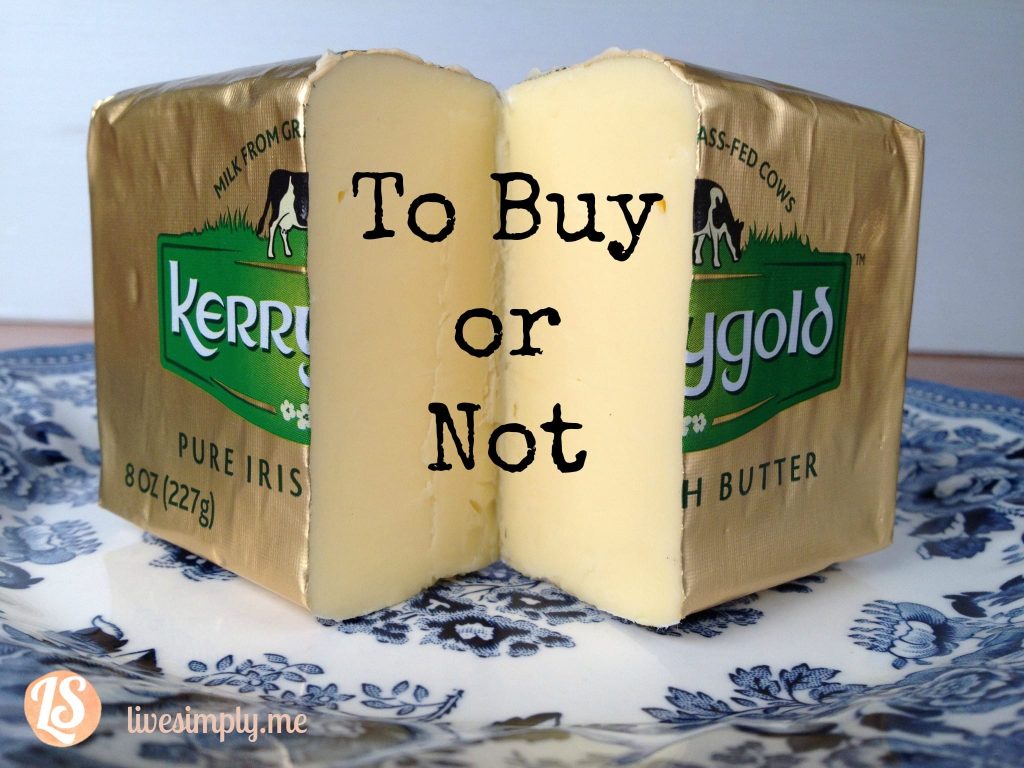
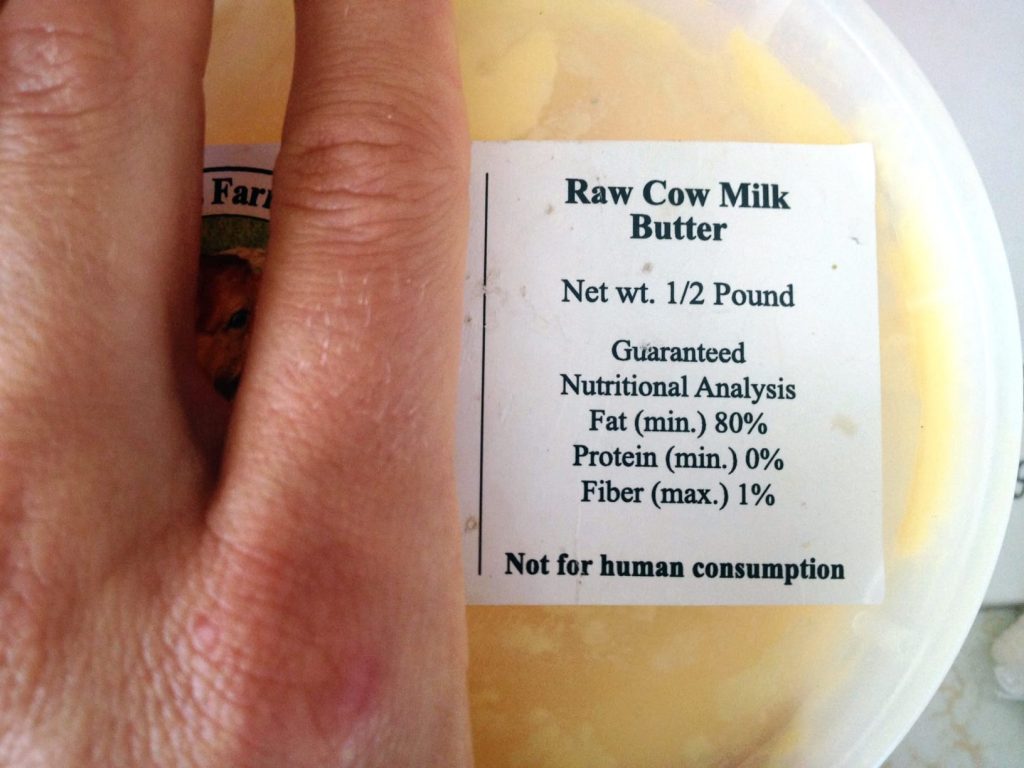
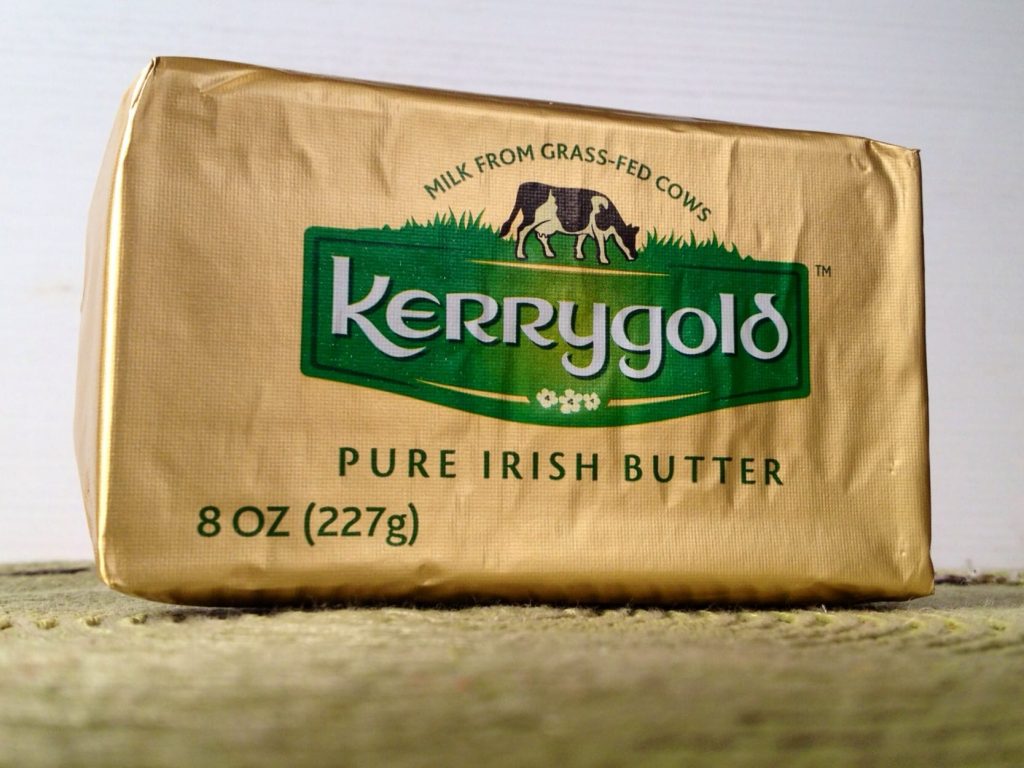
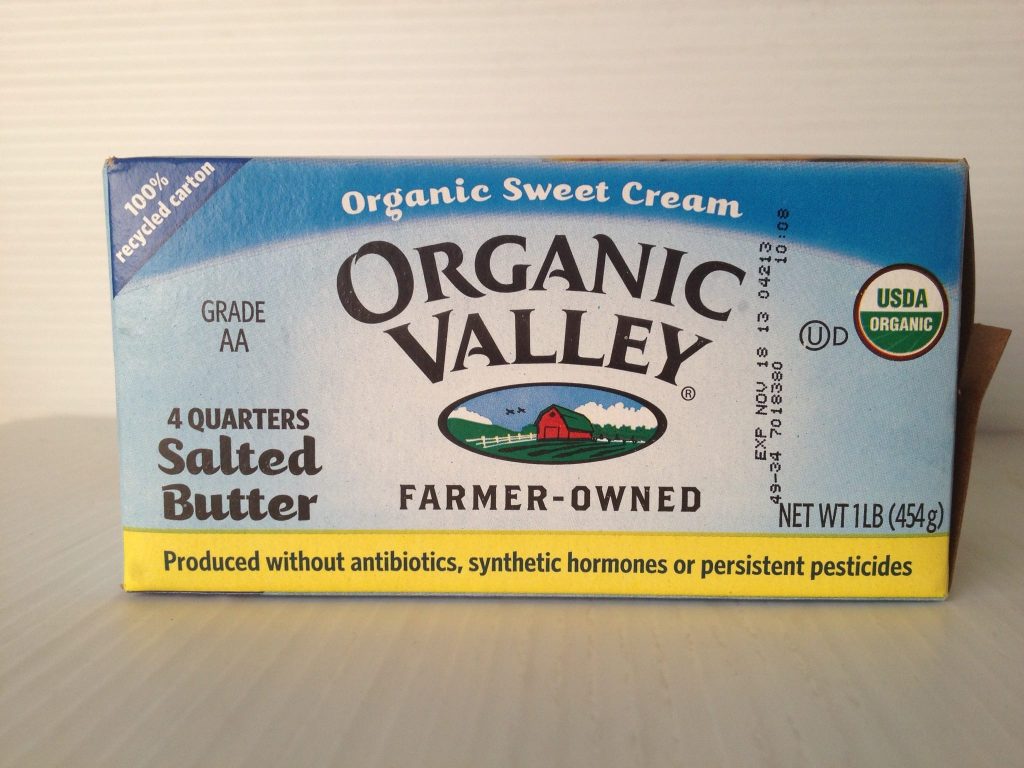
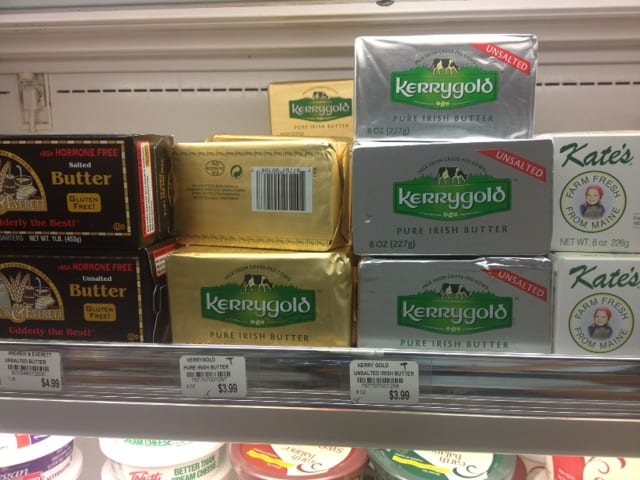
Have you tried Truly Grass Fed butter? They are 95% grass fed. Highest I’ve found!
Hey Jaclyn, I have, really love their butter. When I originally wrote this post, there weren’t many options available. Love that so many grass-fed butter options are now available.
Would you say Truly is the best option these days?
I really like the Truly brand. One of the best for sure!
This article is like wine; it aged well.
Thanks for the research. My only concern is the quote you provided—Cows in Ireland calve in the spring and are therefore outdoors, grazing on green grass when they are producing milk. After calving, cows are provided with supplementary feed to help restore protein and nurture them through this period.—shows that the cows are being supplemented grain precisely during butter production…
Thank you for sharing, Rachel.
After a cow gives birth, the milk goes to the calf.
Thanks for the research. My only concern is the quote you provided says that the cows are supplemented grain precisely when making the butter:
“Cows in Ireland calve in the spring and are therefore outdoors, grazing on green grass when they are producing milk. After calving, cows are provided with supplementary feed to help restore protein and nurture them through this period.”
Thank you for sharing, Rachel!
Two updates: has anyone noticed that Kerrygold disappeared from Aldi’s shelves and replaced with a similarly foiled Countryside Creamery Pure Irish Butter? I thought that was interesting.
Also, has anyone noticed another imported Irish butter recently put on the shelf at Ingles called Truly Grass Fed? It boasts a Non-GMO label as well as disclosures about being 95% grass fed (250 days on pasture), and that only 5% of the cows’ diet is non-grass “extra nutrition”. Not being certified organic, herbicides and antibiotics are still big concerns, but I’m happy with the higher standards and transparency compared to Kerrygold. Taste-wise I’d say it’s on par.
I am at this very moment consuming some very fine Kerrygold Cheddar cheese. I really don’t care how many days those cows are on pasture, but I agree if they are going to make the claim it ought to be accurate.
Linda I agree but was just pointing out that even by their metric the time on pasture has decreased.
The Kerrygold website now states they graze outdoors “up to 300 days” a year. So down 12 days since this article was published…..
I live in rural Ireland and dont see cows in fields for months over winter.
Thanks for sharing, Michael.
LS Team
Thank you for posting, Michael.
I’d said this before but will point out again that “up to 300 days” could mean ONE day, or ten, or zero. The language is weasely, and it troubles me. I would rather see “at least 200 days per year, depending on weather” — any statement where the bare minimum for it to be true is more than nothing.
That Aug 26 post was not from this “Jake”. Maybe I was hacked. A good friend of mine, Bob Harris, started the Smart Balance business. It was to compete with the vegetable oil spreads which at the time had significant levels of trans fats. Bob was decades ahead of the FDA in recognizing the issues with trans fats in partially hydrogenated oils. Bob was not a snake oil salesman, he worked with a major university and supported relevant research. I guess the main concern with butter is the cholesterol content. For awhile there seemed to be a consensus that ingested cholesterol (milkfat, eggs) had little impact on blood cholesterol levels. In recent years that concern has been resurrected to some extent. Bottom like – make your choices and take your chances. It has been at least 40 years since there was any vegetable oil spread in my home. I drink skim milk and use real butter.
Does anybody know if someone is overweight and has a little big high cholesterol would it be better to try the Full Fat Kerry Gold or use Smart Balance?
Hi Jake, I’m not a doctor, but real food over processed will always benefit you.
Ls Team
Kroger PL Butter USDA Grade AA is on sale this week for $l.88/lb. Obviously your and my mileage may differ but as a former pharmacist, and a food law attorney for almost 50 years, that is my choice. There is scant if any valid scientific evidence to justify paying more for all of this GMO, grass fed, organic etc. stuff. I would bet that a bind taste teste would not show much difference either especially when butter is used as an ingredient or on toast etc. The money I save on butter is better spent on some good craft beer where I can taste the difference.
Hey Jerome, Thanks for sharing. That’s the beauty of choice :).
If you put a slab of any butter on a plate next to Kerry Gold and I guarantee I could tell the difference.
If I compared driving a Lexus SUV to my Chevrolet Equinox I guarantee I could tell the difference, but my Chevrolet was half the cost.
Yeah, unfortunately that’s not true….MSG goes by hidden names such as autolyzed yeast and hydrolyzed protein, glutamic acid, ‘Flavour enhancer (621)’, a wide variety of different names with the words ‘glutamate’ or ‘glutamic’…..and others.
Industry figured out how to sneak it in without being as straightforward as ‘MSG’.
Yeah, unfortunately that’s not true….MSG goes by hidden names such as autolyzed yeast and hydrolyzed protein, glutamic acid, ‘Flavour enhancer (621)’, a wide variety of different ingredients with the words ‘glutamate’ or ‘glutamic’…..and others. Industry figured out how to sneak it in without being as straightforward as ‘MSG’.
MSG-sensitive individuals, which I am and perhaps Reese Lafter is, will react to dozens of ingredients which are not strictly MSG but which fool the brain into the same MSG response with a pop of flavor. “Natural flavor” is just one of the hiding places for these ingredients, as is “cultures”. Here is a list of ingredients that provoke an MSG-like reaction in sensitive people. Best wishes, Reese, and anyone else trying to get straight answers from manufacturers!
https://www.truthinlabeling.org/hiddensources.html
PS – If you do not react to this these ingredients, please do not start trying to tell me how they are safe for everyone. Just consider yourself lucky.
I just looked at the ingredient list on my Kerrygold butters ( I have both salted and unsalted in the fridge). Salted: cream and salt. Unsalted: just cream. So I’m pretty sure you don’t need to worry about this with Kerrygold. I could be wrong, of course, but from the ingredient list on those, there doesn’t seem to be an issue. Am I missing something?
I cannot think of any reason a manufacturer would add MSG to butter, salted or unsalted. Also, when used as an ingredient in a food, it must be declared by its name as an ingredient. It cannot be hidden by calling it a “flavor”, natural or artificial.
Hi, just wanted to know if Kerrygold unsalted butter use a fermented process for the “cultures” listed in the ingredients? I have contacted Kerrygold as well and waiting. I am allergic to msg and wanted to know. I have contacted Trader Joes, here is their response concernig their unsalted butter, “In response, the ‘natural flavor’ used for our Trader Joe’s Unsalted Butter is lactic acid, which is indeed produced by fermentation.”
Tillamooks, answered as well,”No, there is no MSG in our butter. The natural flavors ingredient in our Extra Creamy Unsalted Butter is basically distilled milk cutlures, which help give the unsalted butter a ‘buttery’ flavor profile.”
My sister contacted Challenge regarding their unsalted butter and they use a fermented process too but didn’t answer the question if it was msg or not.
Thanks for your time as I just bought Kerrygold at Costco as well last week for a very price.
Hey Reese, Culturing/fermenting is normal if the product doesn’t contain salt, in particular, to extend the life. Here’s a podcast about fermentation: https://livesimply.me/podcast-what-are-fermented-foods/
I am unable to attach so I can’t show my pic of ingredients on my unsalted butter label where “cultures” is listed last. Don’t want to gamble with a reaction. So appreciate JJ & Linda’s explanations which I sometimes don’t bother unless someone is overly forceful. Though some fermented products can be beneficial some are not for me (especially those with sugar starters as the base). I have yet to hear back from Kerrygold but will let you know if they do. Least my hubby isn’t sensitive like me and it won’t go wasted.
I received a response from Kerrygold today and email says their products, “do not contain MSG.”
That’s great, Reese. Thank you for sharing.
Now that is really “aged butter”. I am not an expert microbiologist but my instinct tells me that the product is probably not unsafe. Not much grows in an 82/18 fat/water emulsion. There are aged cheddar cheeses older than that which are very good. Whether this butter has turned rancid from oxidation and therefore not very palatable is another issue. I am one that ignores most food expiration dates but even I probably would toss that one. But taste it and see. I don’t think it will kill you.
Is Kerrygold butter still safe to use if the date to use by is: 8/14/16?
Hi Jane, no I would not use that.
LS Team
I am 100% convinced that no butter, Kerry or otherwise, is irradiated. Some imported spices may be required to under go irradiation – that might be a reason for the wording in the Kerry response. Many consumers mistakenly think irradiated foods become radioactive, or that irradiation somehow causes unwanted changes in the food. Lives as well as substantial suffering and medical expense could be saved if certain foods were irradiated. Decades ago I became very ill from easting cooked frog legs where the cooking was apparently not adequate enough to kill the naturally occurring salmonella or e-coli. But the irradiated stigma makes that a practical impossibility.
Thank you, Jerome.
LS Team
One can’t even begin to imagine the horrors of how this is promulgated at mass factory farms…but I’ve witnessed small family farms in which what Michelle claims, is absolutely true. In Wisconsin I lived for 10 years directly across the road, not more than 50-70 feet, from my neighbor’s barn, in which he milked just a few cows. The baying and moaning and sadness and desperation that came from those mothers at separation….was awful. All night long.
By definition, when a farmer milks a cow…..he will not let the calf take the milk. That’s his ‘product’. They are separated to keep that form happening. There may be some farms which try to strike a balance and allow the calves some of their mother’s milk. I’m afraid this would be a pityingly small handful of truly conscientious farmers, and not at all common.
Know the truth, and have as few illusions as possible.
I still use raw milk, from a local farm which practices relatively humanely….but let’s be clear-eyed about what’s happening.